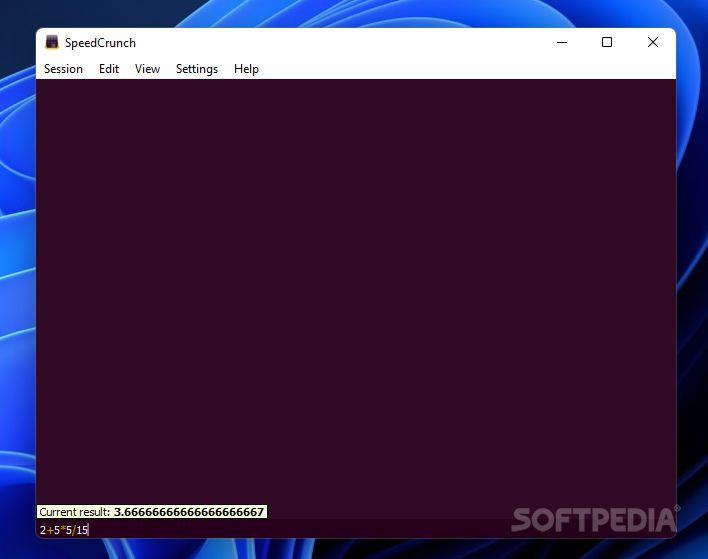
This might change in a future version of SpeedCrunch. Since the current unit system does not support non-linear units like ☌ or ☏, the only available unit for temperature quantities is kelvin. Currently, the available dimensions and their associated primitive units are: For instance if you type meter^2, the result will be a quantity with the dimension length 2 which can only be compared to other quantities with the same dimension. When adding, multiplying, or otherwise manipulating units, SpeedCrunch will track the dimension and raise an error if it detects an invalid operation. Indeed, the dimension of second is time, while meter denotes a length, thus they cannot be compared, added, etc. Simply put, it prevents comparing apples and pears: If you try to convert seconds to meters, SpeedCrunch will complain, stating that the dimensions of second and meter do not match.

The order explicit by using newton / (centi meter).įor the same reasons, expressions like 500 gram / 20 gram and (500 gram) / (20 gram) yield different results.Īn important feature of SpeedCrunch’s unit system is dimensional checking. ‘newtons per centimeter’, don’t simply type newton / centi meter – this will be interpreted as (newton / centi) meter! Instead, make For instance, if you intend to express the unit Means that their use follows the same rules of precedence as any other mathematical operation. This limitation (or feature, depending on your point of view) In SpeedCrunch (unlike in textbook notation), prefixes can be used on their own. In that case, the imaginary part of these numbers is discarded when passing them as an argument to a built-in function. However, previously stored variables may still contain complex values. When complex numbers are disabled, the constant j is not available. However, when given a real argument, cbrt() will always return the real cubic root, regardless of whether or not complex numbers are enabled. With complex number support enabled, the power operation x^(1/3) will return the first complex cubic root of x which is usually non-real. Refer to a function’s documentation for more information.Ĭaution is advised when using functions like cbrt() or any fractional power operation with complex numbers. Not every function in SpeedCrunch supports complex arguments. Simply defining i=j allows you to use i as an alias for j. 203 30 comments Best Add a Comment atopix 4 yr. Whether you only do basic arithmetic or complex scientific calculations, what you DONT need (if you have a keyboard) is 'buttons' on a screen. Simply type the expression you want to calculate using your keyboard or point and click the buttons using your mouse (and press Enter for continuation). The most awesome calculator Ive come across.
#Speedcrunch conversion unit portable
Although SpeedCrunch does not support this notation by default, it is added easily enough. SpeedCrunch is a Free Portable Calculator. Some users (especially mathematicians or physicists) may prefer to use the letter i for the imaginary unit.

If necessary, consider writing the multiplication explicitly, i.e. J ^ 2 = -1 ( 5 + 3 j ) / ( 8 - 2 j ) = 0.5+0.5jĪ note on the syntax of complex numbers: 5j denotes the number 5*j while j5 is a variable named ‘j5’.


 0 kommentar(er)
0 kommentar(er)
